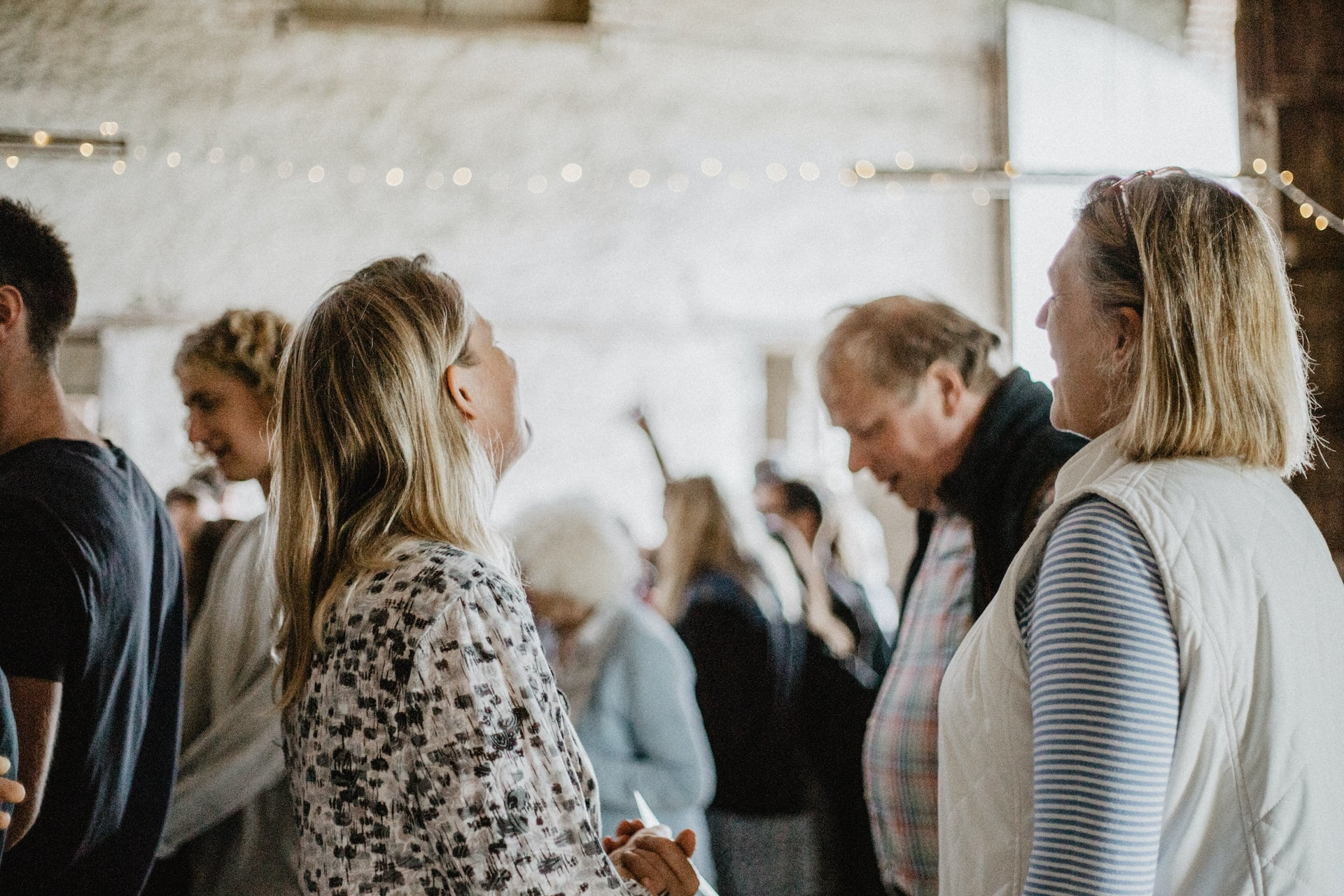The roller coaster ride that is life includes both happy and sad times, as well as occasions for both mourning and celebration. Our feelings can serve as an effective indicator of when we might require assistance from others. If you’re navigating tough emotions, Laguna Christian Counseling is here to provide the support and guidance you need during these challenging times.
 The majority of people attribute various aspects of their lives, including their pleasure, happiness, and joy. What if you were unable to experience any of these things? If this keeps happening to you, you may be suffering from a form of anhedonia such as social anhedonia.
The majority of people attribute various aspects of their lives, including their pleasure, happiness, and joy. What if you were unable to experience any of these things? If this keeps happening to you, you may be suffering from a form of anhedonia such as social anhedonia.
What exactly is anhedonia?
You’ve probably heard of hedonism, which can be defined as the pursuit of pleasure. On the other hand, anhedonia refers to an inability to take pleasure in anything. When a person is unable to take pleasure in the positive aspects of their life, we talk about them having anhedonia.
Anhedonia can take on two different forms. The first type is known as “physical anhedonia,” which describes a condition in which a person is unable to take pleasure in sensations associated with their body, such as the taste of food or the touch of another person.
The second type is known as social anhedonia, which occurs when a person is unable to take pleasure in the company of other individuals. Both types of anhedonia are possible symptoms of depression, as well as other mental health conditions, physical health conditions, and the side effects of certain medications.
How common is social anhedonia?
It is much more common to suffer from social anhedonia than its physical counterpart. It is not the same as introversion, fear, or resentment, nor does it involve having negative feelings about being in social situations. It is not comparable to social anxiety. Anhedonia, on the other hand, is characterized by a reduced or nonexistent capacity for pleasure.

An introvert’s energy is restored by time spent alone, whereas it is depleted by prolonged engagement in social activity (think big groups or lots of together time). The brains of extroverts and introverts appear to be wired in fundamentally different ways, according to the findings of a substantial amount of fascinating research.
The most widespread fallacy is the idea that introverts dislike social interaction. The fact of the matter is that an introvert places a high value on the time they get to spend alone. Time spent by oneself provides an introvert with the opportunity to refresh themselves and replenish their reserves of energy.
Seven signs of social anhedonia
1. Withdrawal from social contact.
The act of avoiding, removing oneself from, or isolating oneself from social activities is known as social withdrawal. This could take the form of no longer attending social gatherings, such as family dinners or nights out with friends, or even no longer engaging with friends remotely, such as by texting or chatting online (through texting, social media, etc.).
2. A lack of relationships.
The following are some characteristics that are shared among friends:
- A certain level of dedication, not only to the friendship but also to the prosperity of the other individual.
- A yearning to maintain “regular” communication with the other person in question. Contact that is considered “regular” may take place once every two days or once every two years.
- Trust, care, and concern for one another are present.
- Interests, opinions, beliefs, or hobbies that are held in common.
- A mutual understanding of one another’s lives, feelings, or fears, as well as their interests and hobbies.
- Associated feelings such as affection, regard, admiration, or appreciation.
The anthropologist Robin Dunbar postulated that a person can only maintain a certain number of close friendships at any given time. The average human has up to one hundred fifty friends, fifty good friends, fifteen close friends, and one intimate friend, according to some estimates. These numbers seem to have been stable throughout history, from societies that relied on hunter-gathering to today’s age of social media.
 Anhedonia, or a lack of interest in social interaction, can make maintaining relationships with other people seem unappealing. You may wake up one day and realize that you have lost the desire to pursue and maintain friendships, romantic relationships, and/or family relationships. If you find that interacting with other people drains your energy and saps your enthusiasm, you might want to avoid deepening the connections you already have or initiating new ones.
Anhedonia, or a lack of interest in social interaction, can make maintaining relationships with other people seem unappealing. You may wake up one day and realize that you have lost the desire to pursue and maintain friendships, romantic relationships, and/or family relationships. If you find that interacting with other people drains your energy and saps your enthusiasm, you might want to avoid deepening the connections you already have or initiating new ones.
3. Decreased emotional reactions.
People who suffer from social anhedonia may find it difficult to smile, give hugs, or celebrate the lives of their loved ones, even though the majority of people are likely to do these things. The inability or decreased capacity to show and feel emotional responses to social interactions, both verbal and nonverbal, is one of the symptoms of this condition.
People will at times try to suppress the more challenging feelings that they are going through, such as grief, sadness, fear, and anxiety. The problem with avoiding unpleasant feelings is that doing so also prevents one from experiencing pleasant feelings, which can lead to a feeling of numbness.
It appears that at some point along the way, to shield yourself from suffering, you simply shut down emotionally. When you’ve spent a significant amount of time developing this defense mechanism, it can be challenging to establish a connection with your feelings.
4. Depression.
Existing depression has been linked to both physical and social anhedonia, though this is not always the case and does not explain every instance. You may be suffering from social anhedonia if you are battling some form of depression and find that you are isolating yourself or preferring to be alone. Make sure you tell your primary care physician or mental health provider about this symptom because it will help them assist you better.
5. Inadequate coping with social change.
 If you suffer from social anhedonia, you may find it difficult to adapt to novel circumstances in which you are required to readjust to the surrounding social environment. The abilities you’ve developed and are accustomed to applying in this kind of environment may no longer serve you well. In social situations in which you are not experiencing genuine pleasure, you might get the impression that you need to “fake it” to appear to be having a good time.
If you suffer from social anhedonia, you may find it difficult to adapt to novel circumstances in which you are required to readjust to the surrounding social environment. The abilities you’ve developed and are accustomed to applying in this kind of environment may no longer serve you well. In social situations in which you are not experiencing genuine pleasure, you might get the impression that you need to “fake it” to appear to be having a good time.
6. A general drop in positive attitudes.
The inability to maintain a positive outlook is yet another symptom of social anhedonia. You might be able to bring encouragement, solutions, or optimism to a situation if you were your old self, but if you’ve developed social anhedonia, you might not be able to. Instead of that, you might tend to be pessimistic or say nothing at all.
7. A vocal expression that is monotone or flat.
Last but not least, if you aren’t experiencing any pleasure or joy, your vocal expression might be monotone or flat, giving the impression that you are uninterested or distracted. This could be a sign of social anhedonia if it has been a pattern over a longer period (as opposed to, for example, just a couple of days of flat verbal affect due to feeling blue, down, or exhausted).
Conclusion
Anhedonia in social situations is more prevalent than you might think. It’s a major sign that someone is depressed. If you are experiencing any of these warning signs or symptoms, you should think about consulting with a professional in the field of mental health.
Consider seeking the assistance of a physician or therapist at Laguna Christian Counseling if you are unable to take pleasure in the good things that happen in your life, and you do not already receive such services.
While a physician can check for possible physiological causes of your symptoms (such as an out-of-whack thyroid, certain vitamin deficiencies, or medication side effects), a mental health professional can help you heal regardless of whether the causes are physical or not. Contact a therapist in your area right away.
“Businesswoman”, Courtesy of Getty Images, Unsplash.com, Unsplash+ License; “Phone Use”, Courtesy of Ave Calvar, Unsplash.com, Unsplash+ License; “Office Party”, Courtesy of Beth Jnr, Unsplash.com, CC0 License; “Listening to Tunes”, Courtesy of Getty Images, Unsplash.com, Unsplash+ License
- Kate Motaung: Curator
Kate Motaung is the Senior Writer, Editor, and Content Manager for a multi-state company. She is the author of several books including Letters to Grief, 101 Prayers for Comfort in Difficult Times, and A Place to Land: A Story of Longing and Belonging...
DISCLAIMER: THIS ARTICLE DOES NOT PROVIDE MEDICAL ADVICE
Articles are intended for informational purposes only and do not constitute medical advice; the content is not intended to be a substitute for professional medical advice, diagnosis, or treatment. All opinions expressed by authors and quoted sources are their own and do not necessarily reflect the opinions of the editors, publishers or editorial boards of Stone Oak Christian Counseling. This website does not recommend or endorse any specific tests, physicians, products, procedures, opinions, or other information that may be mentioned on the Site. Reliance on any information provided by this website is solely at your own risk.





